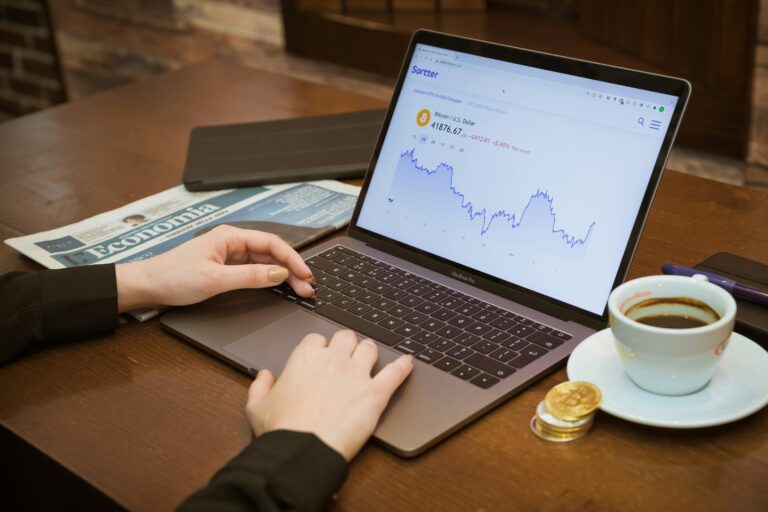Published on: June 18, 2025 | By: Pulsewire

1. Introduction: The Rise of Sustainable E-commerce Packaging
The global e-commerce boom has brought unprecedented convenience, but also a tidal wave of waste. Single-use packaging clogs landfills and pollutes oceans, pushing both consumers and businesses to seek greener alternatives. This growing environmental concern has opened a significant opportunity: the reusable e-commerce packaging business.
This guide will walk you through the entire journey of establishing a successful, eco-friendly venture in this burgeoning market, covering:
- The core concept and business model
- Key benefits for brands and consumers
- Sustainable packaging materials
- Operational intricacies, from logistics to cleaning
- Important regulatory considerations
- Effective sales and growth strategies
2. Understanding the Reusable Packaging Business Model
A reusable e-commerce packaging business offers a circular solution, replacing disposable packaging with durable, returnable alternatives. The core concept involves managing the entire lifecycle of these containers, from supply to return, cleaning, and subsequent reuse.
How the Business Model Works:
- Subscription/Lease for Businesses: E-commerce companies subscribe to or lease reusable packaging from your service. This shifts packaging from a one-time cost to an operational expense, often with long-term savings.
- Consumer Deposit-Refund System: Consumers typically pay a small, refundable deposit when receiving goods in reusable packaging. This incentivizes them to return the packaging.
- Managed Lifecycle: Your service handles the logistics of supply, collection of used packaging, thorough cleaning and sanitization, quality inspection, and redistribution for reuse.
This model provides e-commerce businesses with a streamlined, sustainable packaging solution without the burden of managing the complex reverse logistics themselves.
3. Why Invest in Reusable Packaging? (Benefits & Market Demand)
The demand for reusable packaging is driven by clear benefits for both businesses and the environment:
- For E-commerce Businesses:
- Sustainable Brand Image: Enhances corporate social responsibility and appeals to eco-conscious consumers.
- Cost Savings: Reduces long-term packaging procurement costs, especially after multiple reuse cycles.
- Increased Customer Loyalty: Differentiates brands and fosters stronger relationships with environmentally aware customers.
- Reduced Carbon Footprint: Significantly lowers waste generation and associated emissions.
- Regulatory Compliance: Helps businesses meet growing environmental regulations.
- For Consumers:
- Eco-Conscious Choice: Provides a tangible way to reduce their personal environmental impact.
- Premium Unboxing Experience: Often, reusable packaging offers a more durable and aesthetically pleasing unboxing experience.
- Convenience: With effective return systems, it can be hassle-free.
The market for sustainable packaging is growing rapidly, fueled by consumer demand and stricter environmental policies, making this a high-potential sector.
4. Packaging Design & Materials: Building for Longevity
The success of a reusable packaging business hinges on the durability and practicality of its containers. Packaging design and material selection are paramount for ensuring multiple reuse cycles, ease of cleaning, and efficient logistics.
Durable Materials:
- High-density polyethylene (HDPE) and polypropylene (PP): These plastics offer excellent strength, rigidity, and longevity, making them ideal for numerous reuse cycles. They are also widely recyclable at their end-of-life.
- Textile options: Materials like canvas, woven PET (recycled plastic fabric), or other durable fabrics combine flexibility with robustness. They can be easily branded, machine-washed, and offer a unique tactile experience.
- Bioplastic alternatives: Materials such as PLA (polylactic acid) or starch-based blends can provide compostable options, aligning with broader sustainability goals. However, their lifespan is generally shorter—suitable for 5–10 uses before requiring industrial composting or specific recycling streams. Their selection depends on the desired number of reuse cycles and end-of-life strategy.
Design Considerations:
- Foldability/Nesting: Designs that allow packaging to fold flat or nest compactly reduce space and cost during reverse logistics.
- Ease of Cleaning: Smooth, non-porous surfaces are easier to clean and sanitize, reducing operational time and water usage.
- Tamper-Evident Features: Important for security during transit.
- Branding: Opportunities for co-branding with clients to enhance visibility.
5. Operational Flow: From Supply to Re-use
Managing the lifecycle of reusable packaging requires a robust operational framework:
- Packaging Supply: Procure or manufacture high-quality, durable packaging designed for multiple uses.
- Logistics & Collection: Implement an efficient system for collecting used packaging from consumers. This could involve:
- Drop-off points: Partnering with retail stores, locker networks, or existing delivery services.
- Scheduled pickups: For high-volume clients or specific residential areas.
- Mail-back options: Providing prepaid return labels.
- Cleaning & Maintenance: Establish a centralized facility for cleaning, sanitizing, and inspecting returned packaging. This is crucial for hygiene and extending package life.
- Quality Control: Rigorous inspection ensures only packaging fit for reuse re-enters the supply chain, while damaged items are sent for repair or recycling.
- Inventory Management: Utilize smart tracking systems (e.g., RFID, QR codes) to monitor packaging location, usage cycles, and inventory levels.
6. Business & Regulatory Considerations: Navigating the Landscape
Starting a reusable packaging business requires an understanding of legal, environmental, and operational regulations.
Regulatory Incentives & Emerging Laws:
- Global Push for Reusables: Many regions are introducing policies to reduce single-use plastics and promote circular economy principles. For example, in the European Union, the Packaging and Packaging Waste Regulation mandates that 65% of all packaging (including plastics) be reusable or recyclable by 2025, with higher targets for later years.
- India’s Policy Environment: India’s Plastic Waste Management Rules (2023) actively encourage the use of reusable packaging and emphasize Extended Producer Responsibility (EPR) for plastic waste. This creates a favorable environment for reusable packaging solutions.
- Tax Credits & Grants: Keep an eye out for government incentives. For instance, France has invested significantly in circular packaging innovation, and the U.S. Inflation Reduction Act provides funding opportunities for sustainable initiatives, including packaging.
- Compliance: Ensure your operations comply with local health, safety, and waste management regulations, especially regarding cleaning and sanitization standards.
7. Overcoming Challenges & Driving Consumer Participation
While the opportunity is vast, challenges exist, particularly around logistics and consumer behavior:
- Logistical Complexity of Returns: Managing the collection and return of packaging can be a significant hurdle.
- Solution: Implement smart tracking solutions (RFID, QR codes) and establish a dense network of strategic drop-off points (e.g., collection bins at supermarkets, partnerships with existing delivery networks) to make returns convenient.
- Ensuring Consumer Participation: Customers need incentive and ease of use.
- Solution: The deposit-refund system is a powerful motivator. Additionally, implement loyalty programs, offer small incentives for returns, and clearly communicate the environmental impact of their actions.
- Cleaning & Maintenance Scalability: As volume grows, maintaining hygiene standards efficiently is key.
- Solution: Invest in automated cleaning systems and robust quality control processes.
8. Sales & Growth Strategies: Attracting E-commerce Clients
Attracting e-commerce clients requires a tailored B2B marketing approach that highlights both sustainability and cost-effectiveness.
B2B Marketing Focus for e-Commerce Clients:
- Pilot Programs: Offer potential clients a free or heavily discounted trial run—e.g., 1,000 reusable boxes for a month—to demonstrate the real-world value, gather data on returns, and showcase operational efficiency before a full commitment.
- Value Proposition with ROI Metrics: Don’t just sell sustainability; sell savings. Highlight clear Return on Investment (ROI) metrics, such as:
- “Save an average of $0.20 per package after just 10 uses compared to single-use options.”
- “Reduce your packaging waste by X% (based on pilot data).”
- “Enhance your sustainability reports with quantifiable metrics your clients can publish.”
- Co-branded Packaging: Design attractive, durable reusable totes or boxes that feature both your brand and your client’s logo prominently. This not only boosts visibility for both but also fosters a long-term brand association and a sense of shared commitment to sustainability.
- Webinars & Case Studies: Host informative webinars showcasing the benefits and operational ease of your solution. Produce compelling, downloadable case studies featuring success stories, highlighting cost savings, reduced carbon footprint, and improved customer engagement from your pilot programs or early clients.
- Partnerships: Collaborate with e-commerce platforms, logistics providers, or sustainability consultants to reach a wider audience of potential clients.
9. Conclusion: The Future is Circular
The reusable e-commerce packaging business isn’t just an environmental initiative; it’s a smart, forward-thinking venture poised for significant growth. By transforming waste into a valuable resource and offering a compelling solution to e-commerce’s packaging problem, you can build a business that delivers both substantial impact and sustainable income.
With a well-designed system, robust operations, and effective client engagement, you can drive into the future of circular trade.
💬 Call to Action
- 👉 Are you ready to build a business that makes a difference? Share your thoughts or questions in the comments!
- 👉 What are your biggest challenges in adopting sustainable practices in your business? Let us know!
- 👉 For more insights into eco-friendly business models and emerging market trends, follow Pulsewire.in and join the sustainable revolution.
Related Posts:
- Top Profitable Online Business Ideas in 2025
- Smart Farming: Integrating Livestock Above Fish Ponds
- Top Global Earning Sources for 2025
External Resources:
- Ellen MacArthur Foundation – Circular Economy Packaging
- Packaging World – Sustainable Packaging
- EPA – Sustainable Materials Management
👤 About the Author
Sandeep Jadhav is a tech-focused blogger and founder of PulseWire.in, passionate about exploring how innovation can solve real-world problems. While not a certified smart home technician or eldercare professional, he combines verified insights from industry leaders, government programs, and real-life examples to bring accessible guides to readers. His writing focuses on emerging tech trends that offer both social impact and entrepreneurial potential.









